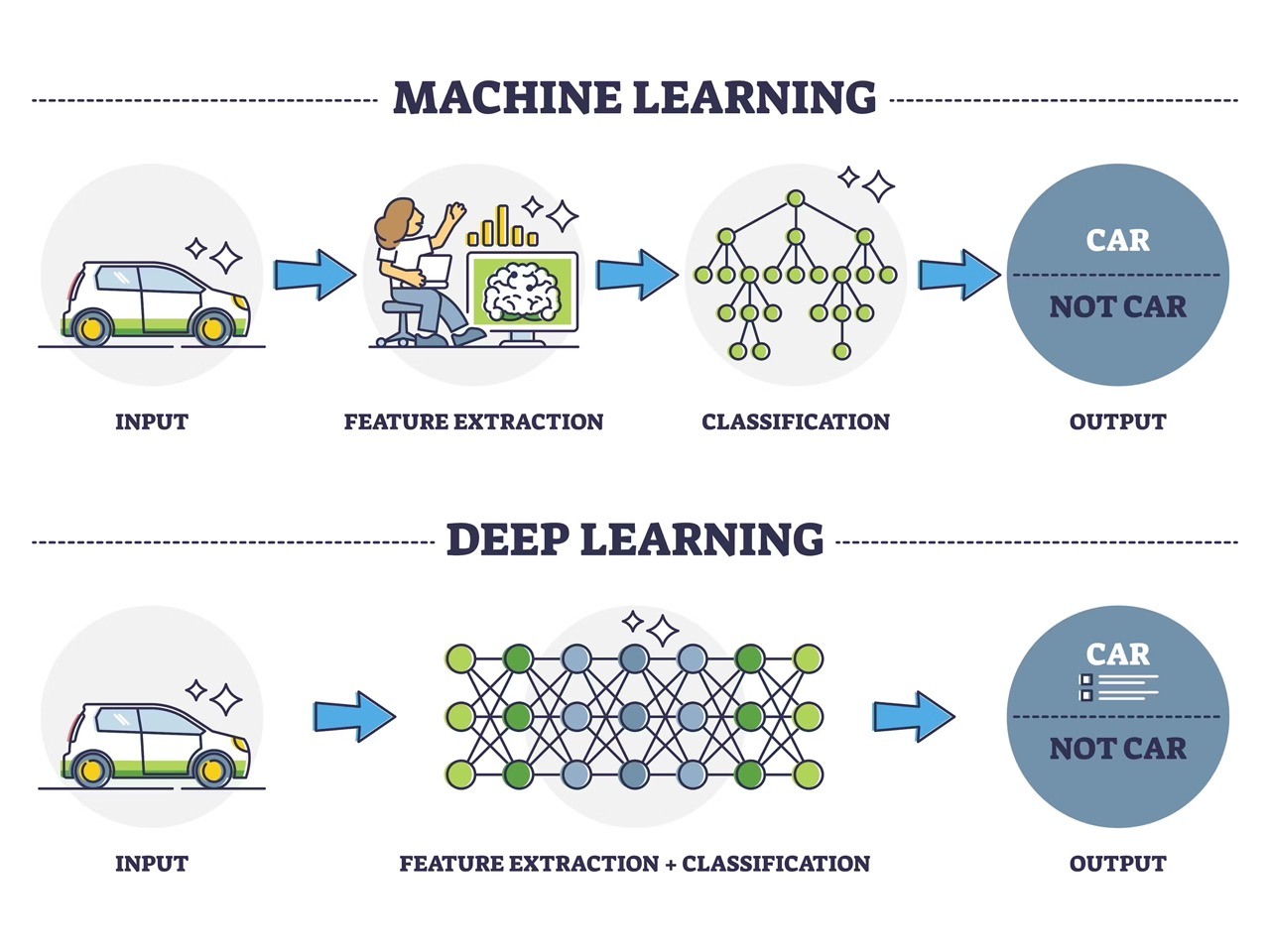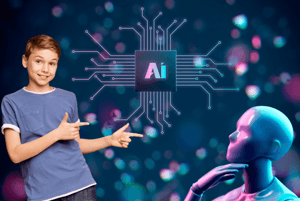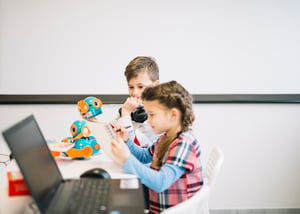Artificial Intelligence (AI) is a fascinating field that is transforming our world. Imagine if computers could think and learn just like humans! That’s what AI is all about. From your favorite video games to voice-activated assistants like Siri, AI is everywhere.
Understanding AI might seem challenging, but it’s an exciting journey. Learning about AI can help kids develop critical thinking and problem-solving skills. Plus, it’s fun to discover how technology works behind the scenes. So, let’s dive into the world of AI and explore how it’s shaping our future!
Table of Contents
What is AI?

Artificial Intelligence, or AI, is a type of technology that enables machines to think and learn like humans. Imagine a robot that can recognize your voice, answer questions, or even play chess with you. That’s AI in action!
At its core, AI involves creating computer programs that can solve problems, make decisions, and improve over time. These smart programs can analyze data, recognize patterns, and adapt to new information. Whether it’s a self-driving car or a personalized recommendation on YouTube, AI is all about making our lives easier and more exciting by mimicking human intelligence.
There are different types of AI, including:
- Narrow AI: This type of AI is designed to perform a specific task, like recognizing faces in photos or recommending songs on Spotify. It’s incredibly good at its job but can’t do anything else.
- General AI: This is the kind of AI that can understand, learn, and apply knowledge across a wide range of tasks, much like a human. While we’re not there yet, researchers are working hard to achieve this level of AI.
- Super AI: This is a futuristic concept where AI surpasses human intelligence. It would be capable of performing any intellectual task that a human can do, but much faster and more efficiently.
In short, AI is a rapidly advancing field with the potential to revolutionize many aspects of our lives. By understanding the basics of AI, kids can unlock a world of possibilities and become the innovators of tomorrow.
Core Technologies of AI
AI relies on several key technologies that enable it to function and evolve. Let’s explore some of the core technologies behind AI:
Machine Learning
Machine learning is a subset of AI where computers learn from data. Imagine teaching a computer to recognize different types of animals. By feeding it thousands of images of cats, dogs, and birds, the computer learns to identify these animals on its own. Machine learning is like teaching a computer to be smart by showing it lots of examples.
Deep Learning
Deep learning is a specialized form of machine learning. It uses neural networks, which are designed to mimic the human brain. These networks have multiple layers that process information in stages. Deep learning is especially good at tasks like recognizing speech and images. For instance, when you use voice commands on your phone, deep learning helps it understand what you’re saying.

Natural Language Processing (NLP)
NLP allows computers to understand and respond to human language. This technology is what makes chatbots and virtual assistants like Siri and Alexa possible. NLP can analyze text, recognize speech, translate languages, and even generate human-like text. It’s what helps your phone understand and respond when you ask it for the weather forecast or to send a message.

Robotics
AI and robotics often go hand in hand. Robotics involves creating machines that can perform tasks in the physical world. When combined with AI, robots can navigate, make decisions, and interact with their environment intelligently. Think of a robot vacuum that cleans your house; it uses AI to navigate around furniture and avoid obstacles.

Computer Vision
Computer vision enables machines to interpret and understand visual information from the world. This technology is used in self-driving cars, which need to recognize and respond to road signs, pedestrians, and other vehicles. It also powers facial recognition systems and helps diagnose medical images in healthcare.

These core technologies work together to create the smart systems we interact with daily. Understanding these technologies helps demystify AI and shows how it’s shaping our world in innovative ways.
Why Kids Should Learn About AI
Learning about AI is incredibly beneficial for kids. Not only does it prepare them for the future, but it also helps develop essential skills like problem-solving, critical thinking, and creativity. Understanding AI can open up a world of opportunities and spark curiosity about how technology works.
Future Career Opportunities
AI is becoming a crucial part of many industries, from healthcare to entertainment. According to a study by the World Economic Forum, AI and machine learning jobs are expected to grow by 71% in the next five years . This means that having knowledge of AI can give kids a significant advantage in the job market of the future.
Enhancing Problem-Solving Skills
Working with AI requires logical thinking and the ability to solve complex problems. By learning how AI systems work, kids can improve their analytical skills. This not only helps in understanding technology but also enhances their ability to tackle challenges in everyday life.
Encouraging Creativity
AI isn’t just about coding and numbers; it also involves a lot of creativity. Designing AI models and thinking about new ways to use AI can inspire kids to think outside the box. Whether it’s creating a new game or developing a smart home device, the possibilities are endless.
Real-World Impact
AI is already having a huge impact on our daily lives. From personalized learning apps to virtual tutors, AI can make education more engaging and effective. By understanding AI, kids can become more informed users and even creators of technology that can solve real-world problems.
Staying Ahead of the Curve
With AI technologies advancing rapidly, it’s important for kids to stay updated with the latest developments. Learning about AI now can help them stay ahead of the curve and be better prepared for the technological advancements that will shape their future.
In summary, learning about AI equips kids with valuable skills and knowledge that can significantly benefit their academic and professional lives. It prepares them for a future where technology will play an even more integral role, and it fosters a mindset of innovation and curiosity.
How Kids Can Learn About AI

Learning about AI can be a fun and engaging experience for kids. Here are some great ways to get started:
Coding Platforms and Online Courses
There are many coding platforms designed specifically for kids. Websites like Code.org, Scratch, and Tynker offer interactive lessons that introduce the basics of programming and AI concepts in a fun and easy-to-understand way. These platforms use games and puzzles to teach kids how to code, making the learning process enjoyable.
At CodaKid, we offer AI courses tailored for kids, helping them understand and create their own AI projects. Our courses are designed to be engaging and educational, providing a solid foundation in AI and programming.
Educational Videos and YouTube Channels
There are numerous educational videos and YouTube channels that explain AI concepts in a kid-friendly manner. Channels like CrashCourse Kids and CodeNinjas provide visual explanations and real-life examples of how AI works. Watching these videos can make complex topics more accessible and entertaining.
Books and eBooks
There are also many books available that are tailored to young readers interested in AI and technology. Titles like “Hello Ruby: Adventures in Coding” by Linda Liukas and “AI: How Computers Predict the Future” by David W. Pearson can be great resources. These books break down complex ideas into simple, engaging stories and activities.
Interactive Platforms and Experiments
Hands-on learning is a powerful way to grasp AI concepts. Platforms like Experiment AI allow kids to create their own AI projects. Kids can build chatbots, create AI games, and experiment with machine learning models. These interactive experiences help solidify their understanding and spark creativity.
AI Workshops and Camps
Many organizations offer AI workshops and summer camps for kids. These programs provide hands-on learning experiences and allow kids to work on real AI projects. Participating in a workshop or camp can provide a more immersive and collaborative learning environment.
By exploring these resources, kids can start their journey into the fascinating world of AI. Encouraging curiosity and providing access to these tools can help them develop a strong foundation in AI and technology.
Embrace the Future with AI
Artificial Intelligence is transforming the world around us, making it a fascinating subject for kids to explore. From understanding what AI is and how it works, to learning about its core technologies like machine learning and natural language processing, we’ve covered the essentials. We also discussed why it’s beneficial for kids to learn AI and shared practical ways to start their journey, including courses offered at CodaKid. Fun facts about AI show how pervasive and exciting this field is.
Encourage your child to dive into AI and become part of the future. Check out our AI courses and spark their curiosity today!

















